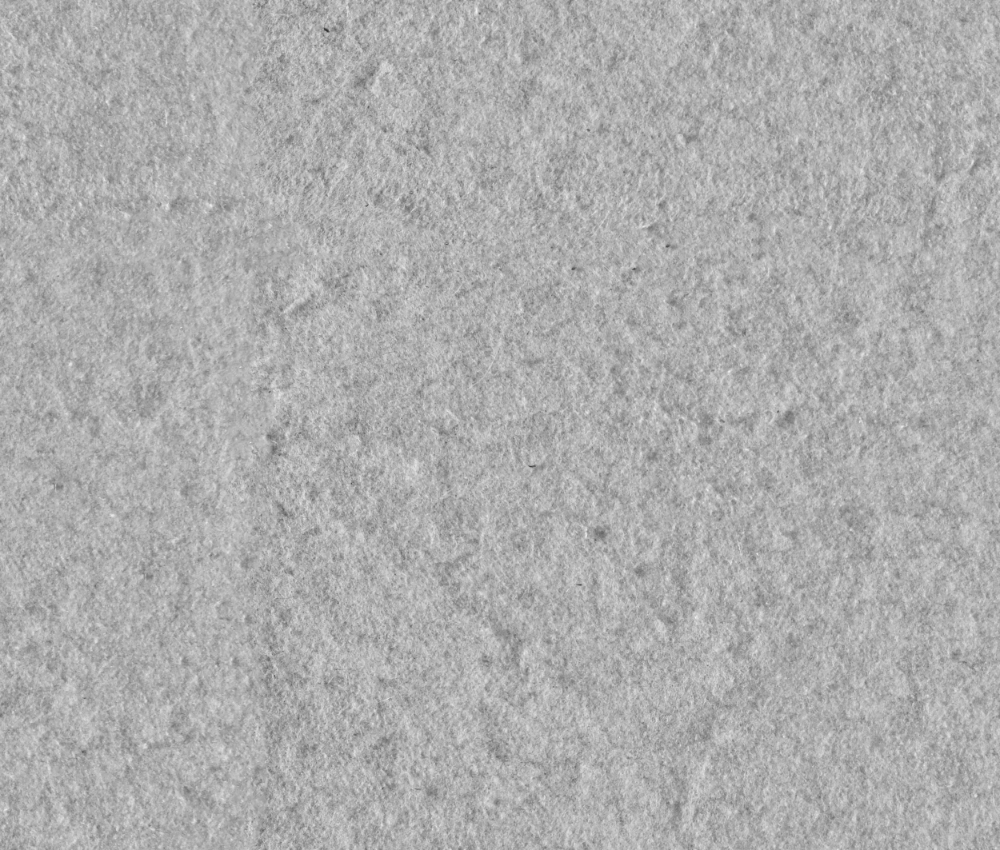Felt
Category
Fabric
Download
Edit
Felt is an interlocked and matted fabric which can be either natural, from cotton or wool fibres; synthetic, from nylon, acrylic, or other similar synthetic yarn-like materials; or a combination of both, usually wool and acrylic. Felt traces its history back thousands of years to parts of both Asia and Europe, where it was initially used to make warm, insulated clothing, shoe linings and tents. Dark grey in colour, this felt texture is a low-pile, high density fabric, similar in appearance to melton, a woven fabric. Being interlocking and matted, it is highly durable and water resistant. Some acrylic based felts are waterproof by design. The fibres themselves are normally lightweight, although the density of the fabric tends to make it somewhat heavier. Felt’s interlocked construction helps prevent splits and frays at edges, while it cuts and can be worked more favourably than knitted or woven fabric.
Made by carding the clean, loosened and separated wool after removing matted clumps and tangled pieces, it then undergoes a rigorous process of being bound together under steam, then being pressed to matt the fibres together. The batts of felt are then further machine compressed and hardened before being cleaned, dyed and left to dry. It is then processed to achieve a consistent density and depth while increasing the interlocking of the fibres, before being trimmed and shaved to tidy up the edges.
Felt can be a sustainable material if it is made from natural fibres such as wool, or by using recycled felt, yarn or carpet fibres that don’t contain glue or other harmful chemicals. Acrylic fibres are less sustainable due to their plastic and synthetic fibre content, although they can be recycled. Felt made from natural materials will be lighter, softer and more malleable, while acrylic felts are typically harder and coarser. Felt is still generally rougher than other fabrics due to the manufacturing process, although felt made from natural materials is not rough enough to cause damage or irritation to skin or material surfaces.
Felt is a common material for both acoustic and thermal insulation as its density and interlocking layering of fibres help absorb sound and limit transmission of hot or cold air. It is also highly durable, cushioning and light, despite its density. It is a popular warm, insulating lining for boots and winter clothing, while its water resistance helps repel moisture while allowing it to breathe, preventing water building up below the surface, while the variety of colours with which it can be dyed lends itself to creating bright and arresting patterns in interior design projects or furniture such as chairs, sofas, decorative wall and ceiling panels, or mats and rugs.
A seamless fabric texture with a felt surface. Seamless textures can be tiled repeatedly across a surface without visible seams making them useful for architectural drawings and 3D models. This image can be used as a SketchUp texture, Revit material or imported into Photoshop for use in 2D illustrations. A high resolution version of this texture is available, as well as CAD hatches and PBR maps with Architextures Pro.

